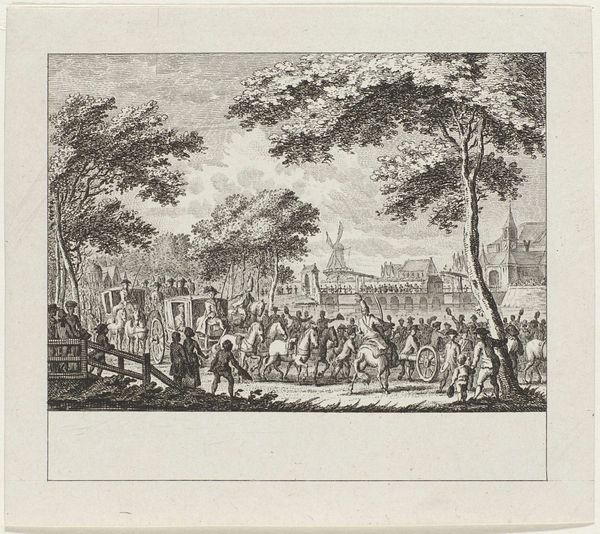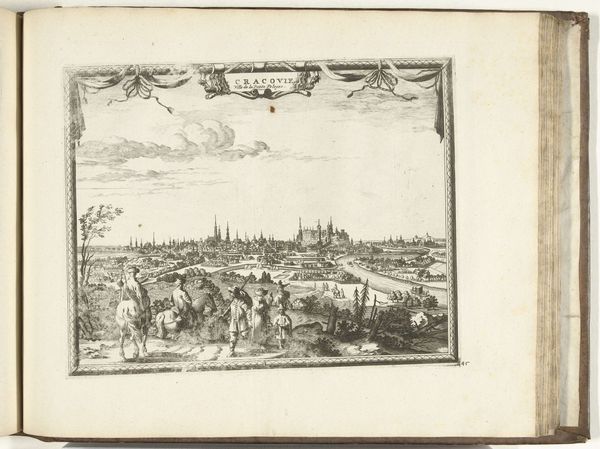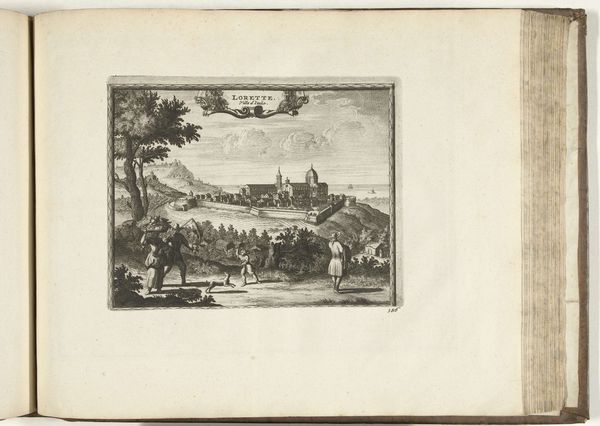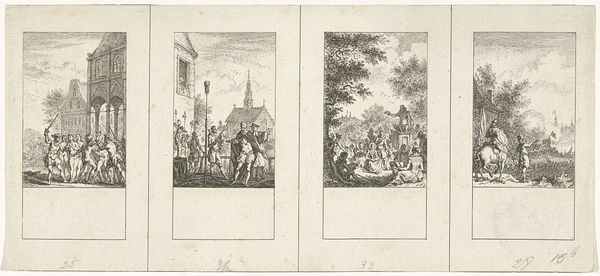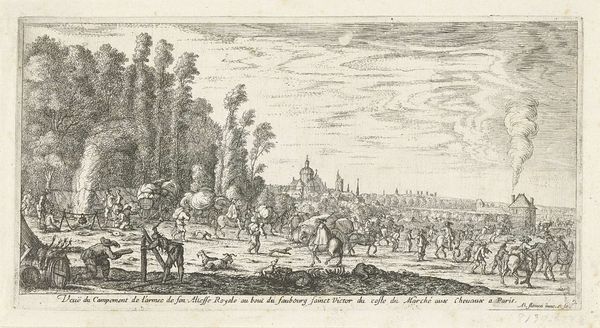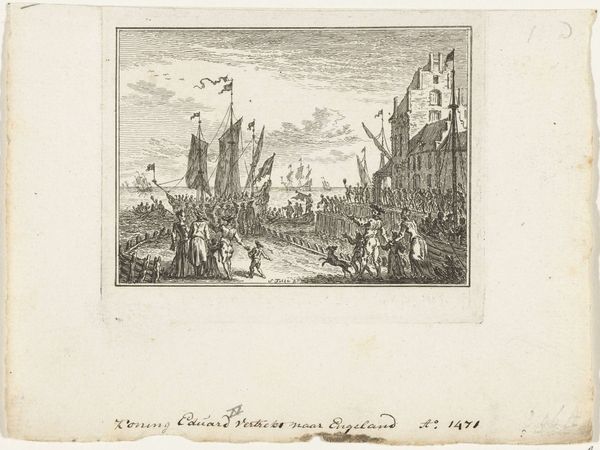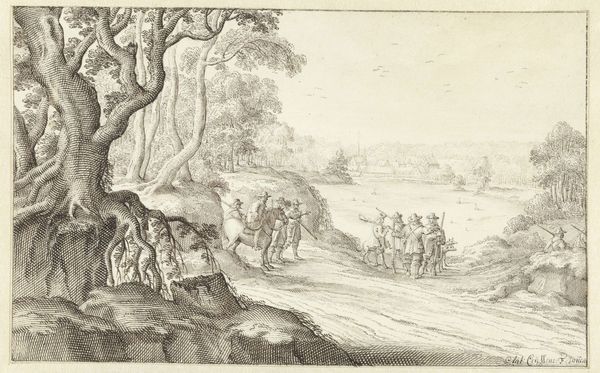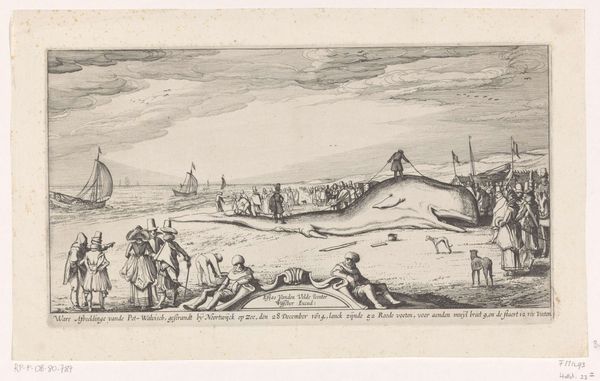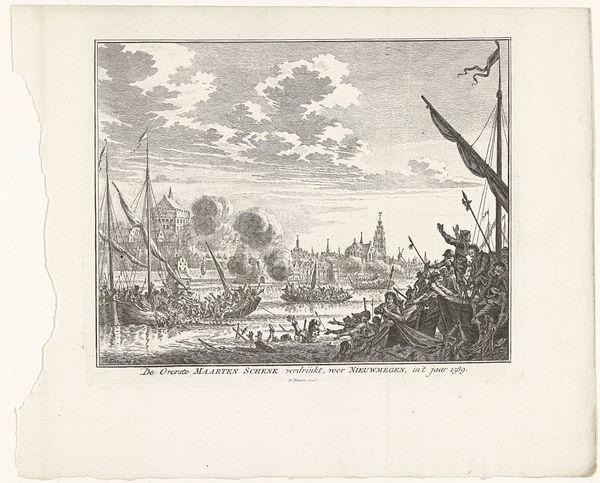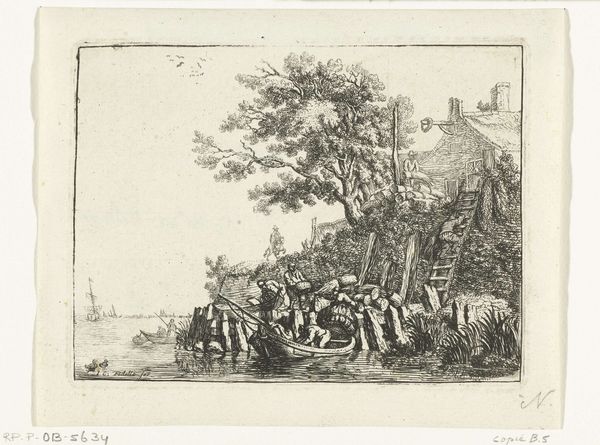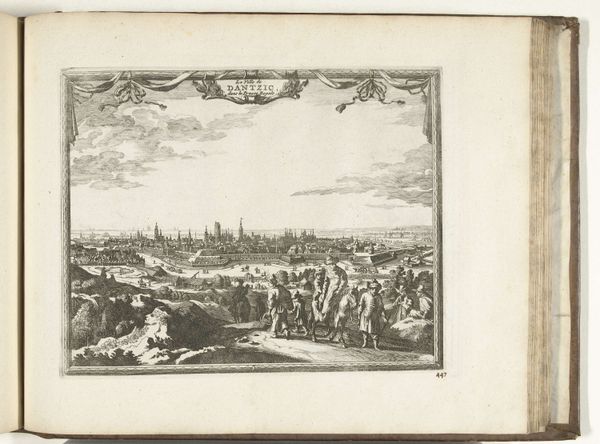
Dimensions: height 94 mm, width 107 mm
Copyright: Rijks Museum: Open Domain
Curator: Simon Fokke's print, "Spaanse troepen verlaten Den Bosch, 1629", made between 1782 and 1784, depicts the departure of Spanish troops from Den Bosch. What catches your eye initially? Editor: There's a profound sense of finality. Despite being a landscape format, it really feels like a stage, a performance ending. You have these rigid lines of departing soldiers in contrast with figures watching the procession. There's an end-of-an-era melancholy, maybe? Curator: The engraving technique allows for such detail in the rendering of the uniforms, the weapons… you can almost feel the weight of the labor that went into each of those lines. The material choices reinforce the power of reproducible imagery and mass consumption. This imagery would be consumed and understood across geographic space. Editor: Exactly, and focusing on that aspect, look at how Fokke plays with perspective. The marching soldiers recede into the distance towards the silhouette of Den Bosch. The architectural forms give this whole historical scene an almost symbolic meaning, right? Towers reaching toward heaven but also representative of temporal power. The artist created enduring imagery out of a very particular historic event. Curator: I am thinking that this isn’t a spontaneous reflection of historical reality. The piece was produced almost 150 years after the depicted historical event! This historical reproduction had a consumption value for Fokke’s contemporary audiences in the Dutch Republic. Editor: It's less about literal truth, and more about conveying an idea. Consider those figures on horseback on the right—surely representative of Spanish leaders—conveying authority but, because they're at the composition's edge, they appear diminished. Curator: I agree; this composition serves as both a historical record and a potent symbol. What I appreciate most is the physical record we see here, on this print and its process of creation. Editor: For me, it is how those constructed scenes serve as mirrors. Simon Fokke tapped into something essential about collective memory through iconic visual languages. It prompts you to ask: What narratives will endure? Curator: Yes. Thanks for pointing that out.
Comments
No comments
Be the first to comment and join the conversation on the ultimate creative platform.


